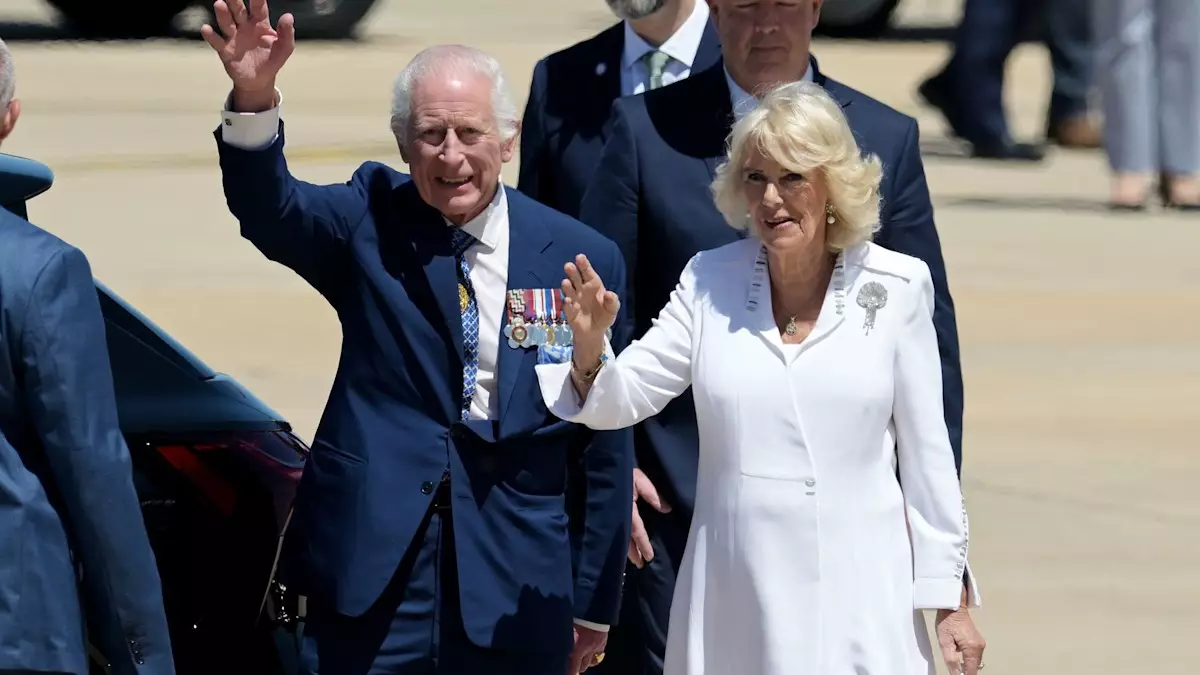King Charles III and Queen Camilla recently embarked on a significant journey to Canberra, celebrating their first visit to Australia’s capital in almost ten years. Their arrival was met with warm enthusiasm from the public, reflecting the enduring connection between the monarchy and the Australian people. Amid escalating conversations around the role of the monarchy in Commonwealth countries, this visit served as a poignant reminder of shared history and collective values.
The imagery of Queen Camilla donning an elegant white silk crepe dress designed by Anna Valentine resonates deeply. Paired with a magnificent diamond and pearl brooch inherited from the late Queen Elizabeth II, she symbolized both continuity and transition within the royal family. This juxtaposition of past and present is critical as Australia grapples with its identity as a nation, balancing respect for heritage with the shifting dynamics of modern governance.
This particular trip holds layers of meaning for King Charles, who has a deeply rooted, personal connection to Australia. Having spent a formative period studying in the country during his teenage years, he has long regarded Australia as a second home. However, the overshadowing factor this time is the King’s recent health challenges, revealing his cancer diagnosis earlier in the year. This visit isn’t just ceremonial; it is a touchstone, reflecting his resilience and commitment to duty despite facing personal trials.
The royal couple’s first stop was the Australian War Memorial, an evocative locale steeped in national history. The gesture of laying a floral tribute at the Tomb of the Unknown Australian Soldier was not just symbolic of respect for past sacrifices but also served as a reminder of the ongoing need for unity and remembrance in an era where such values can easily be overshadowed.
The public’s reaction to the royal visit adds another complex layer to this narrative. While the excitement surrounding the royals was palpable, the presence of diverse viewpoints—from enthusiastic monarchists to self-identified republicans—highlights the nuanced conversation Australia continues to have about its national identity. One attendee, Georgia Bray, captured this sentiment succinctly, expressing that while she identifies as a republican, the occasion warranted a display of national pride and hospitality towards their sovereign.
Moreover, royal supporters, like Lynton Martin, showcased the spectacle of enthusiasm surrounding the visit, elevating the occasion beyond mere politics. Dressed in a suit adorned with Union Jacks, Lynton’s exuberance emphasized the emotional connections many Australians hold to the monarch, irrespective of their political alignments. Such moments exemplify the complexity of national sentiments surrounding royal visits.
The itinerary included significant engagement with contemporary issues, notably in environmental advocacy, a cause close to King Charles’s heart. His visit to the National Bushfire Behaviour Research Laboratory, where he witnessed cutting-edge research into combatting Australia’s infamous bushfires, signifies a modern monarchy that aligns itself with pressing global concerns. The demonstration of the “pyrotron” wind tunnel showcased both the local challenges of bushfire management and the importance of innovative solutions.
Furthermore, the visit to Parliament and meetings with senior government officials reinforce the royal couple’s role as diplomatic figures. Their presence serves to bolster ties within the Commonwealth and exhibit the enduring relevance the monarchy holds in promoting collaboration and understanding between nations.
As their Australian tour continues, the role of King Charles and Queen Camilla as representatives of British heritage in a contemporary Australia will undeniably be scrutinized. Each appearance and engagement further solidifies their commitment to the commonwealth, even amidst the backdrop of personal health challenges. This visit is more than a ceremonial duty; it is a robust affirmation of resilience, connection, and the ongoing dialogue between tradition and modernity in shaping Australia’s future. The blend of personal significance, public sentiment, and engagement with pressing issues paints a vibrant picture of a monarchy facing the challenges of the 21st century while striving to remain relevant and respected.

